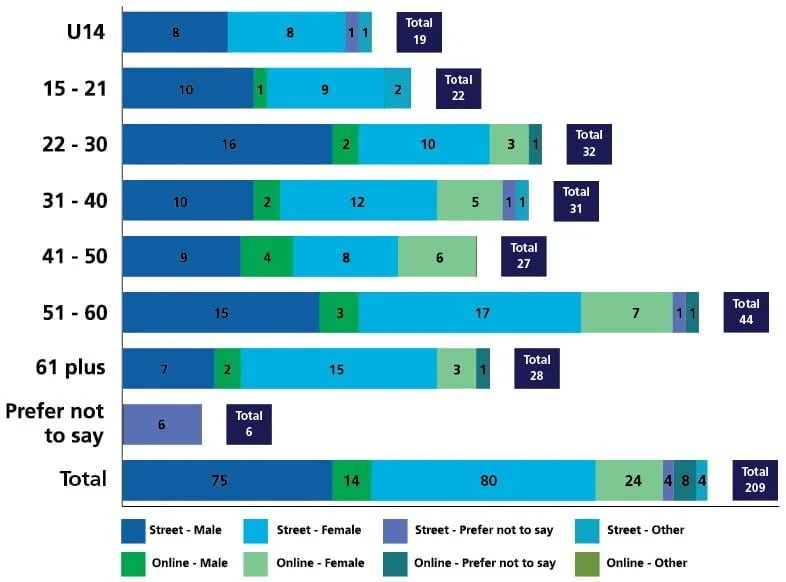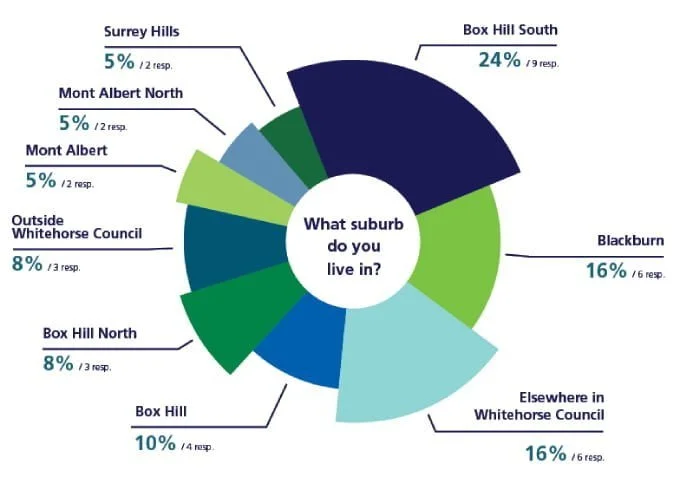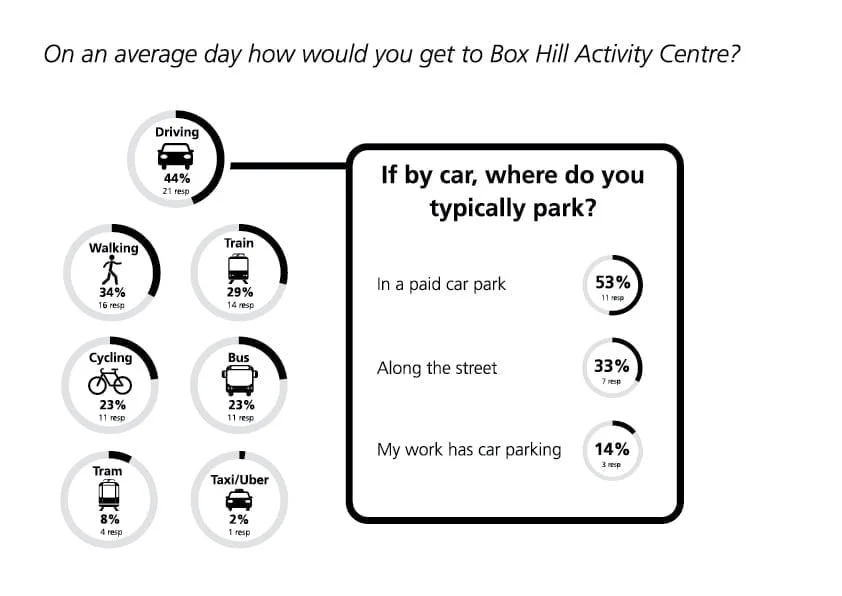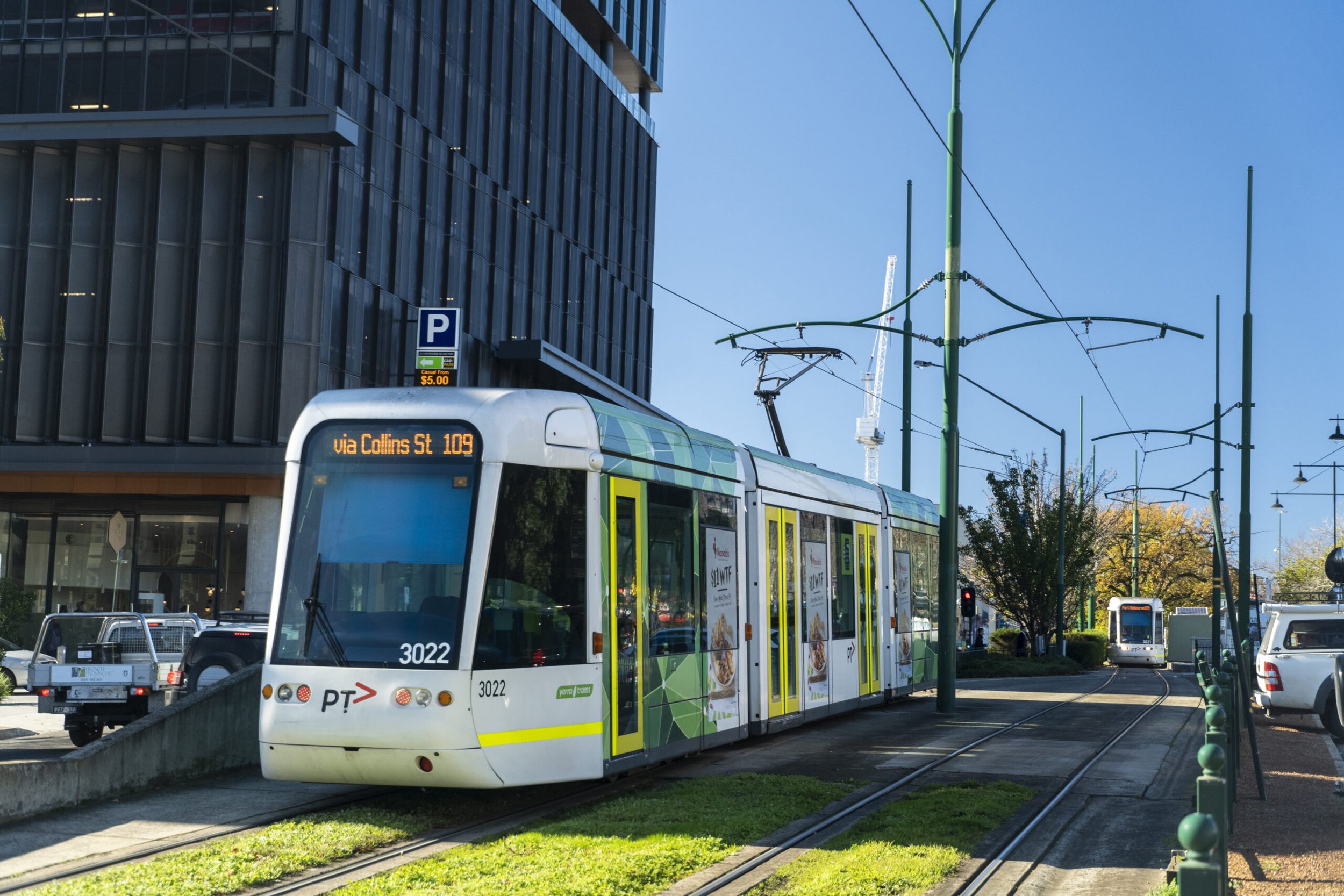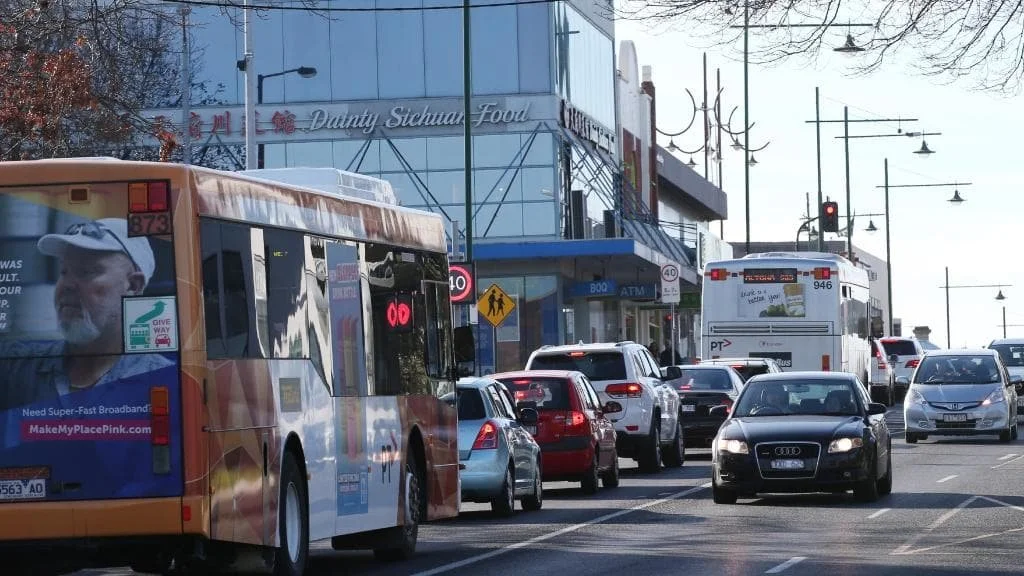Box Hill Integrated Transport Strategy
Project done jointly with AECOM, Place Score and Conversation Co
“Make it easier to access information about public transport, have digital signage around Box Hill so you know when the next bus or train is coming, from wherever you are in the area.”
The Project
Conversation Co was commissioned to engage with the Box Hill community to better understand the perceived state of public transport in the suburb.
Data was gathered through online forms, surveys and local place-based pop-ups to understand what the community wished to see improved, as well as to discuss how changes to the area would impact on their daily commutes.
Discussion topics were analysed in these categories:
Public transport
Streets and public spaces
Walking and cycling
Road safety
Car parking
The report generated from this research expressed the community’s desire to see overall improvement to the network that would allow them to travel without needing to rely on personal vehicles. Currently the public transport options in place don’t provide an adequate alternative needed to reduce road congestion in the suburb.
Outcomes
The results of the engagement program provided Council with a framework, creating a Draft Strategy outlining future changes, alterations and improvements to be made to Box Hill’s transport network.
Agreed (CRG) recommendations include:
Extension of tram lines for further connections into Box Hill.
Prioritisation of pedestrian activity in the Box Hill CBD.
Upgrades to signage and way-finding to allow easier and more fluent connections between different transport modes.
Segregation of road use transport modes such as bike lanes in an effort to make these options more appealing and safe.
Upgraded and extended foot and bike path routes to make traversal through the suburb using these options a viable alternative.
Redirection and alteration of high use traffic routes to direct through traffic away from Box Hill’s CBD, mitigating traffic congestion and improving safety.
Improvements in bus routes and timetables for more frequent and adaptable bus travel and implementation of bus lanes.
Reflections and Key Learnings
Translated material with translator aided conversations in Box Hill Centre (Malay and Mandarin).
Dividing the material into sections of interest, allowed people to pick and choose the parts they were interested in having a say on.
When discussing place based projects the use of maps and visualisations is helpful in speaking to the content.
Using focused conversations to engage with, and keep interested highly inform stakeholders, this group of individuals helped to piece together the draft strategy and some of the initiatives explored within the project.
“We need to improve pedestrian crossings around Box Hill Central, it currently prioritises cars over pedestrians, this in turn encourages people to drive instead of walk.”
Here are stats for this project:
Safety in Box Hill I support a focus on improving safety for people walking, cycling and driving, even if that means lowering the posted speed limit?
Yes – 82%
No – 18%
Public Transport
I support increasing public transport use in and around the centre, including dedicated bus lanes along major roads and bus priority traffic lights?
Yes – 93%
No – 7%
Walking and Cycling
I support prioritising walking infrastructure (e.g. new zebra crossing and more green man time to cross roads) even if there are minor car delays?
Yes – 89%
No – 7%
Car Parking in Box Hill
I support giving new buildings near the transport interchange the opportunity to reduce their parking requirements by providing alternatives such as car share and bike parking?
Yes – 66%
No – 34%
Streets and Public Spaces
I support increasing footpath widths and public spaces to allow for more outdoor dining, seating, planting and places to meet others, even if it means removing some on-street car parking?
Yes – 75%
No – 25%
Challenges
The diverse backgrounds of the community in Box Hill and surrounding suburbs meant it was vital to have a translator to assist when discussing topics with community members who preferred not to speak in English or could portray their ideas better in another language. Having this option available made passers-by more open to communicating with us as they could express themselves more freely.
Keys to Success
Breaking down our engagement material into different categories was vital in understanding community feedback for the face to face engagement process. Categorisation allowed participants to streamline their thought process and bounce ideas off other suggestions that had already been submitted. This also made data analysis for Conversation Co easier to see trends and repeated concepts from the engagements.
Establishing a Community Reference Group of different users and interest groups (commercial, PTV, BUG, community).
Quotes
“Make it easier to access information about public transport, have digital signage around Box Hill so you know when the next bus or train is coming, from wherever you are in the area.”
“Narrow parts of Whitehorse Road outside Box Hill Central, to create a central plaza and grassed area. For dining, events and enjoying natural environment.”
“Install parking sensors and signage so people know where carparking is, so that it stops people looping and almost causing accidents while they are searching for a carpark.”


